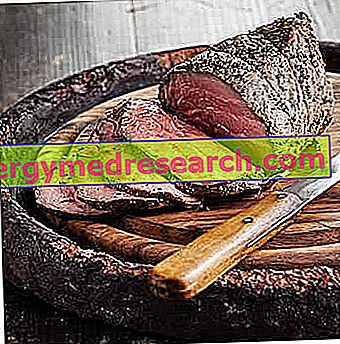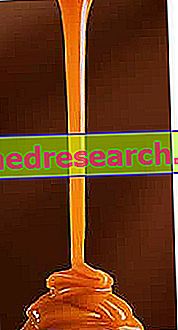Classification of cattle
- calf, male or female bovine under the age of 12 months (it is generally slaughtered at about 4 months) from the many tender meats thanks to the high water content, which sometimes, unfortunately, may have been obtained with the administration of hormones, which they have the effect of inflating the meat;

- calf, male or female bovine slaughtered between 12 and 18 months, has tender meats and an excellent nutritional value even if it contains less water than the calf;
- beef, 3/4 year-old cattle, which if male has been castrated, if female it has never given birth, with a lower quantity of water contained in the meat and a higher fat content;
- ox, castrated male bovine of over 4 years, the meats are similar to those of beef.
Classification of cuts
- 1st cut - meat from the rear quarter, are the most valuable and the most expensive, they have a quick cooking (grilled or in a pan);
- 2nd cut - meat from the front quarter, they are less valuable, but equally nutritious, they have a semi-rapid cooking (baked, roasted, stew);
- 3rd cut - meat from the front quarter, but not precious, are the least expensive, they are cooked slowly (boiled, stewed, braised).
Goulasch Light
In this video, Alice, our personal cooker shows how to prepare a light goulasch from a cut of lean beef, the bell (Garretti), particularly suitable for stews. Ideal for those who love healthy and light cuisine to get along with those who prefer taste and intense flavors. Good vision!
Light Trentino gulash
X Problems with video playback? Reload from YouTube Go to Video Page Go to Video Recipes Section Watch the video on youtubeWhat to base on the choice of beef?
1) Color is the calling card of meat, unfortunately it can be influenced by the effects of ambient lighting.
2) The pH, is the measurement of the acidity or basicity of a substance, is neutral at the time of slaughter, after which it changes and stabilizes around 5.4 / 5.5, which corresponds to a slight acidity and which is the ideal value for quality meat; if the meat has a pH with a higher value, the phenomenon called "scrambled meat" appears; a delay in lowering the pH, on the other hand, causes an increase in color intensity and water retention.
3) Water retention, is crucial for quality meat, affects appearance, cooking and juiciness; water represents 75% of the weight of a muscle dividing into bound water and free water; the water bound is that firmly inside the muscle fibers (it is a small percentage, around 5%), the free water is, instead, enclosed in the muscular structure; if the bound water is in too low a percentage, after cooking the meat will be stringy and hard, but it could also be the fault of too long cooking; changes in water retention capacity are related to the species, sex, age, health status, degree of preparedness, and how animals are transported; hormones have great power in keeping more water.




